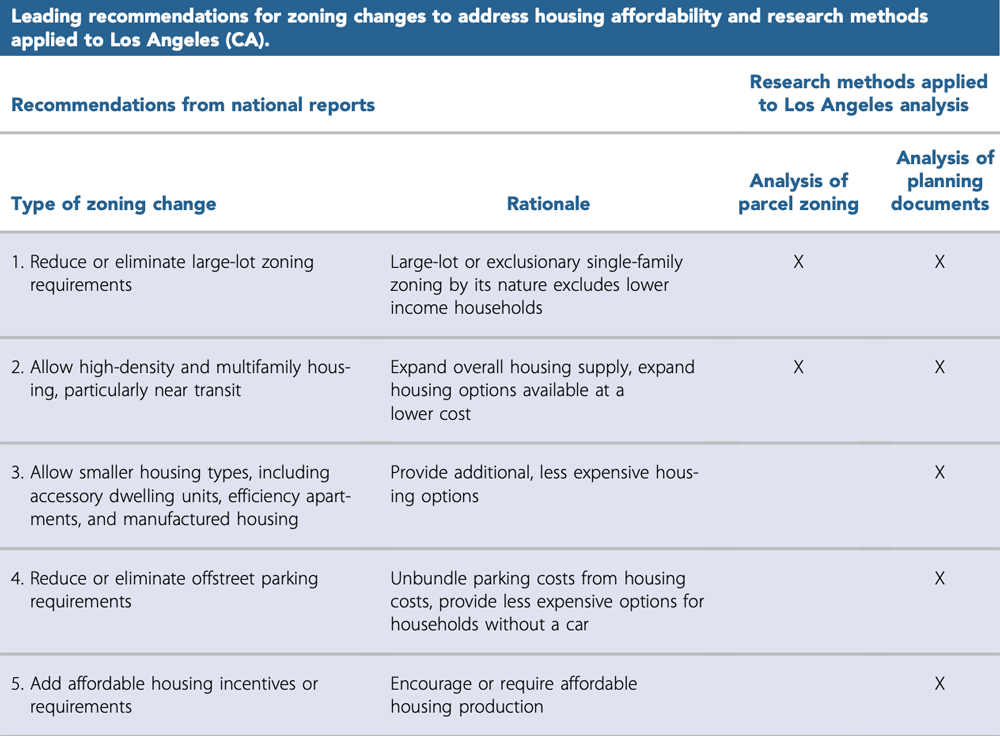Uncovering JAPA
Zoning: The Cause and the Cure for High Housing Prices

It's clear zoning constitutes a considerable barrier to affordable housing production. Single-family restrictions, mandatory minimum lot sizes, and high parking requirements — among other stipulations — limit developers' ability to build affordable housing.
However, in this quandary, we may also find a solution.
Upzoning and Housing Affordability
In the Journal of the American Planning Association (Vol. 85, No. 2) article "Changing Residential Land Use Regulations to Address High Housing Prices," C.J. Gabbe explores the potential of changing zoning requirements to improve housing affordability in the City of Los Angeles.
Through studying rezonings that allow higher densities ("upzonings") in Los Angeles, Gabbe reports that "the city upzoned 0.6% of its large-lot, single-family land (354 acres) to other single-family, multifamily, or commercial designations. The city also upzoned more than 1,200 acres from any zoning designation to a designation allowing at least 50 housing units per acre" (Gabbe 2019, 153).

From "Changing Residential Land Use Regulations to Address High Housing Prices," JAPA Volume 85, No. 2.
Housing Affordability in Los Angeles
Gabbe's work demonstrates that local efforts are being made to promote greater housing affordability in Los Angeles. However, he finds that "most upzonings were initiated either by property owners seeking to maximize development opportunities or through specific plans focused on small areas" (Gabbe 2019, 162). This is worrisome; small interventions like these cannot hope to address larger problems.
Moreover, eliminating obstructive land use regulations is only the first step. There still are likely barriers in approval processes. And once the development is built, planners must contend with how much of it ends up being affordable and to whom.
As Gabbe mentions, residential development proposals may receive political and or public opposition at different points in the process.
Despite the seeming consensus that housing affordability is a concern, there has not been widespread political or public support for major zoning changes in Los Angeles.
He argues that planners and housing advocates should look to the state level. In California, affordable and market-rate housing production has been supported through the California State Assembly passing laws "requiring municipalities to grant density bonuses for affordable housing and make ADU approvals easier" (Gabbe 2019, 162).
I agree, that planners must support legislation and initiatives that enable substantive change — regardless of our proximity to the decision-makers. I, too, would argue that planners should use our positions to advocate for continuously easing all barriers to affordable housing production. Without improving the expediency and efficacy by which affordable housing is delivered, we risk moving these problems elsewhere, never truly solving this systemic issue.
Top image: Los Angeles photo by D Ramey Logan from Wikimedia Commons (CC BY-SA 4.0).


